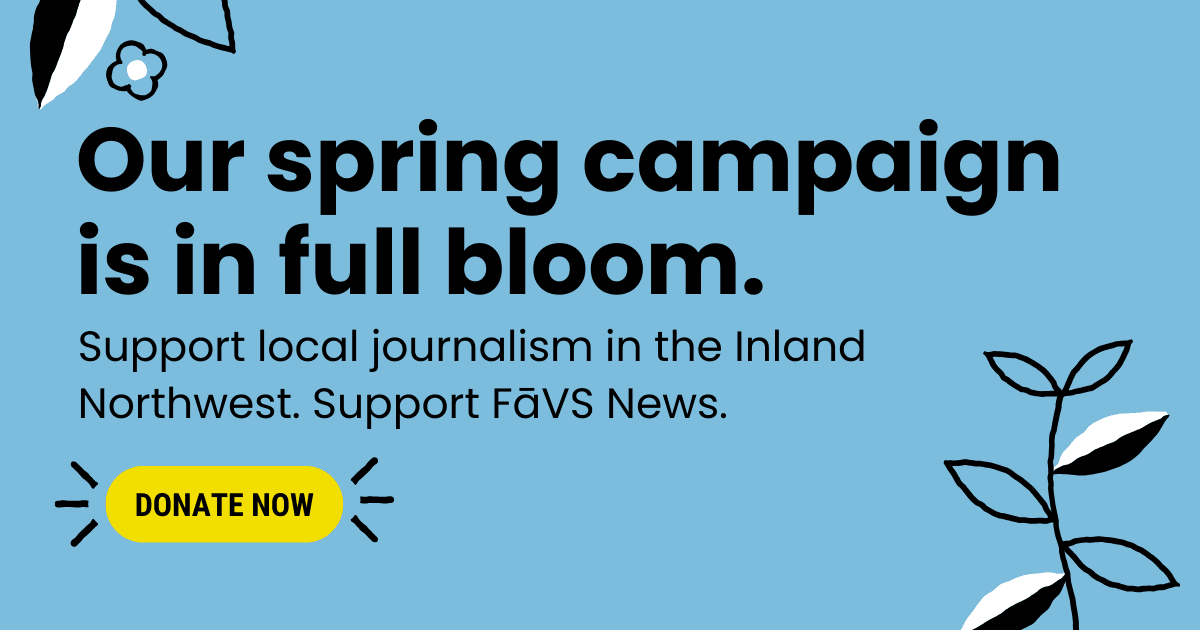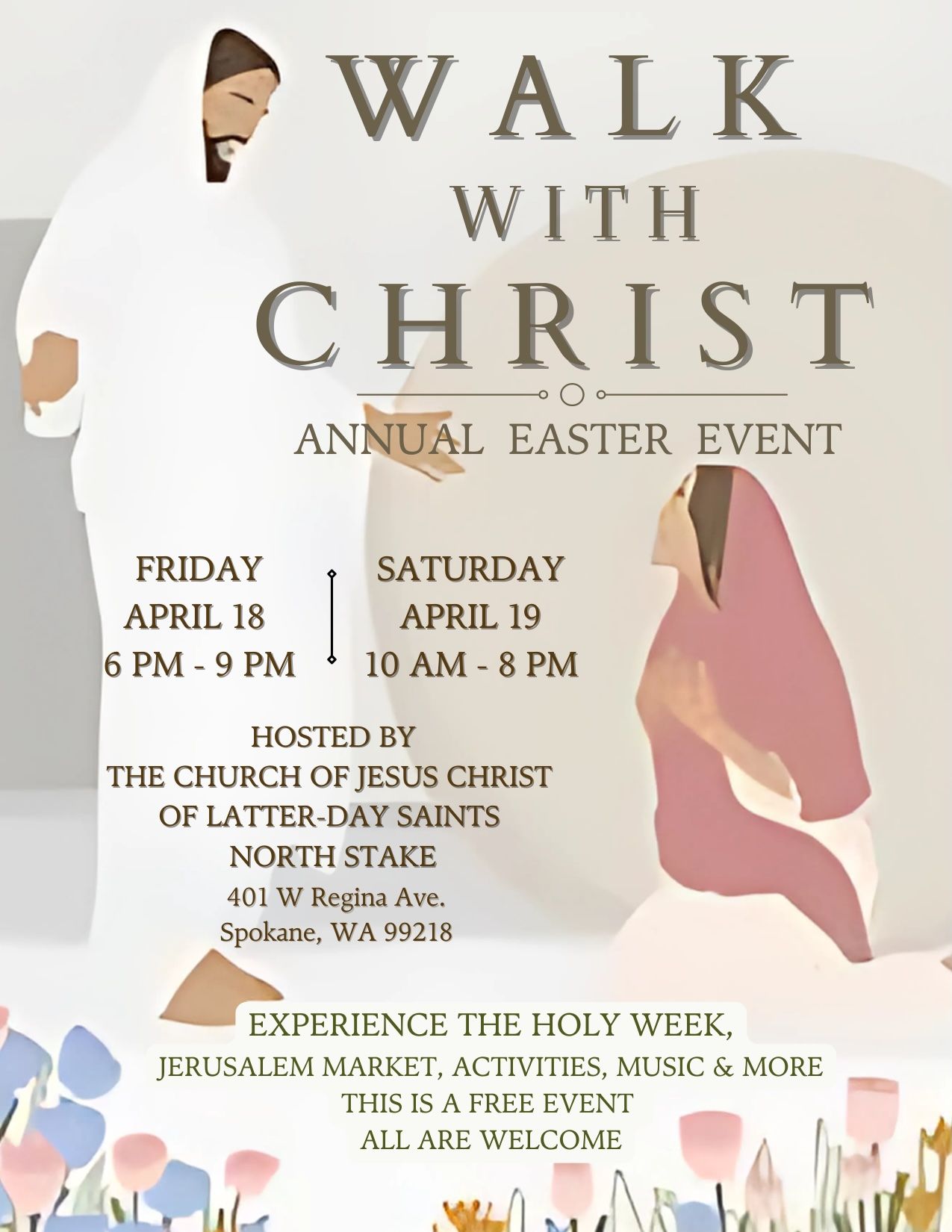Going back to in-person worship is getting safer. It’s time for people of faith to reconnect.
By Tara Roberts
On Sunday morning, my husband signs into Zoom so we’re at church “on time,” even though half the household doesn’t have appropriate pants on yet. What even are appropriate pants these days? My 12-year-old plops down in basketball shorts. I can’t tell what the 9-year-old is wearing because he’s buried in a nest of stuffed animals.
I make it to the living room halfway through the opening prayer. My older son, who recently got his first COVID vaccination, announces that he plans to keep doing Zoom church.
“No way, dude,” I say. “You’re going in person with me and grandma. We’ve got to learn how to do church again.”
I’ve been thinking a lot about what it will mean to “do church again.”
Way back in April 2020, I wrote a story for SpokaneFāVS about how local faith leaders were envisioning positive post-COVID changes in their communities. At the time, it still seemed like the pandemic would have clean lines around it; we’d hunker down for a few weeks then go rolling back better than ever. Instead, it’s been months of exhausting decisions and disagreements over what’s safe and what’s right.
My church, an Evangelical Lutheran Church in America congregation that’s a blend of retirees and young families, reopened for hybrid services a few weeks ago. We’re still trying to figure out the future.
With more people tiptoeing back, a mass of difficult questions faces every community and person of faith. But a central question parallels my 12-year-old’s: Why go back in person when we could keep watching online in our basketball shorts on our cozy couches?
I’ve landed on my answer to this by comparing it to another side of my life — my role as an adjunct professor.
I taught a hybrid class this spring semester. Most days, it was me and a handful of students spread out in the classroom, with another 20 on Zoom. It was my first time teaching during the pandemic, and I found my usual approaches to building a classroom community didn’t work with the new setup. I felt disoriented and frustrated.
Toward the end of the semester, when I was fully vaccinated, I gently suggested that more people try coming back to class in person. I knew many students were also vaccinated, and we’d set a precedent for social distancing and masking in class that I felt was safe and successful.
But no one new came. I ran into a student outside class, and she admitted it wasn’t that she didn’t feel safe or didn’t like the class — it was just tough to change her habits. She’d gotten used to rolling into class “on time” from the comfort of her home.
I don’t think digital options for college classes are going away anytime soon, and I don’t think they should. Done well, virtual and hybrid courses can give more people access to college. I loved having students who attended class from home with their children, or who were able to move to take professional jobs while finishing their degrees.
But I still believe the in-person classroom experience is worth prioritizing. There are a long list of reasons why, but one is simple: community.
Friendship, respect and trust are difficult to foster in a some-in, mostly-out group. Our class discussions were often lackluster. How could students feel comfortable voicing a controversial opinion or expressing uncertainty if they didn’t know their classmates?
I was constantly steering the ship of conversation instead of stepping back while students engaged with each other. Students could watch passively, and I didn’t know them well enough to encourage their interests or ideas. How could I be a good mentor to someone who was only a black box on a screen?
These same dilemmas translate to communities of faith. I want my church to be active. I don’t want it to be focused on a single central personality (as in a pastor — not, you know, God). I want to know the people in the pews next to me, to know who to turn to when I need help or a challenge or a laugh. I want robust discussions and friendships that extend beyond Sunday.
I want some of that to happen virtually. For example, I’d like my 80-something friend Tom to be able to call in from his home 50 miles out of town in the winter. I love that one of our congregant’s children and grandchildren call into service from all over the country.
But, in the classroom and in church, I think we can better serve the people who need digital options if the people who don’t need them show up in person. Pastors and teachers can spend time getting to know a few distanced people instead of struggling, as I did, when everyone’s scattered. A connected community can think of inventive ways to engage those who need to be online.
Disconnected people start losing that sense of community. We start thinking, like my students and my son, that we’d rather stick with what’s easy and comfortable without realizing what we’re giving up.
In three weeks, when my son is fully vaccinated, we’ll be heading to church in person for the first time in a very long time. I believe he needs the other people in that room to help him grow up, and I believe the people who can’t be in that room yet (like his little brother) need him to be there, too — even if he shows up in basketball shorts.










